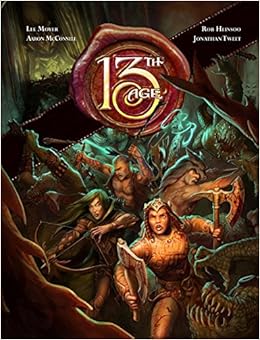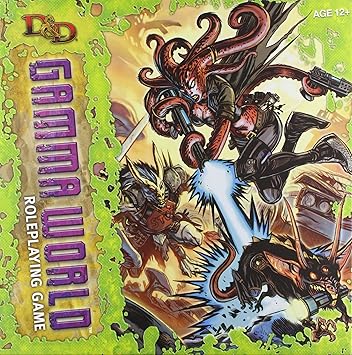Shadow of the Demon Lord Initiative for 5e Take Two
Just a quick note to let you know that we can meet at Gen Con. Get your FREE tickets to the DSPN Q&A panel to meet Rudy Basso, Celeste Conowitch, Brittany Quintero, Vegas Lancaster, and more of your favorite podcast people. I’m only at Gen Con for one night, so this is the best way to meet my friends and me.
I owe you all many thanks. Last week I showed off an idea for a new Dungeons & Dragons fifth edition initiative system inspired by a new Unearthed Arcana article put out by Mike Mearls on Greyhawk Initiative and Rob Schwalb’s incredible game Shadow of the Demon Lord. Many of you provided excellent feedback. Among the top criticisms of this system were….
- Giving bonus actions weight in the system unfairly gives monsters an edge, since they rarely have bonus action options.
- There needs to be more clarification on how things like legendary actions, traps, and spells that end “at the end of your next turn” work.
- I should provide a few more options to keep initiative variable for those who want it.
- This system should definitely be faster than re-rolling initiative each round.
- People seem very concerned about how the Alertness feat would work. This isn’t covered in my updated core system, since feats are optional, but I do cover it with some variants.
So with those thoughts in mind, I present the 2.0 version….
Shadow of the Demon Lord Initiative in D&D 2.0
I’ve proposed a super simple version of Shadow of the Demon Lord for 5e initiative in a previous blog post and a fuller version in another. Here’s a revised, fuller version:
At the start of each round of combat, each creature declares if taking a fast or slow turn. Creatures do not declare what, specifically, it is going to do during that turn. The following describes each type of turn:
- Fast Turn. You can take only a an action or move your speed. No matter what you choose to do, you can take a bonus action in addition.
- Slow Turn. You can take a bonus action, action, and move your speed.
The round of combat then proceeds as follows:
-
Fast turn phase
- Player characters taking a fast turn act.
- Monsters taking a fast turn act.
-
Slow turn phase
- Player characters taking a slow turn act.
- Monsters taking a slow turn act.
Player characters and monsters in each turn phase decide among themselves the order in which they act. If player characters cannot determine an order, the DM determines it. This could also be determined by allowing an opposed Dexterity check.
Creatures that are surprised take no actions during the first round of combat as normal.
Looking At Specific Cases in Initiative
The following specific cases are handled in these specific ways:
- Events that occur on initiative count 20, such as a legendary creature’s lair actions, happen before the fast turn phase. Events that occur on initiative count 19 – 6 happen between the fast turn phase and slow turn phase. Events that occur on initiative count 5 – 0 happen after the slow turn phase.
- Legendary actions can occur after any creature other than the legendary creature takes its turn and recharge at the start of a round, instead of at the start of the legendary creature’s turn.
- Saving throws, spells, and effects that take place or end “at the start of” or “at the end of” a creature’s next turn instead take place or end at the start of or the end of the turn phase of the same type in the next round. For example, if a wizard casts chill touch against a goblin during the slow turn phase, that goblin cannot heal until the start of the next round’s slow turn phase. If a creature is frightened by a dragon’s Frightful Presence during the fast turn phase, the frightened creature can repeat its saving throw at the end of each fast turn phase.
Variants: Changing Monster Order
Allowing players to always go first means monsters die quicker, which also speeds up play, but for some groups, this isn’t dangerous or variable enough. Two variants below adjust combat to keep it even more random for you.
Variant: Start Old School
At the start of combat, roll for initiative. Each creature in each turn phase acts in the order of its initiative. For example, at the start of combat Bob the wizard rolls a 5, Jill the cleric rolls a 10, Amy the ranger rolls a 15, Sam the paladin rolls an 16, the bugbear rolls a 12, and the goblin rolls a 7. Jill, Amy, and the bugbear all take a fast turn, meaning they act first in this order: Amy (15), bugbear (12), and Jill (10). Then the slow turn phase proceeds as follows: Sam (16), goblin (7), and Bob (5).
Variant: Side Initiative
You can roll for side initiative at the start of each round (this is discussed in the Dungeon Master’s Guide). If the players win, they go first in each turn category. If the monsters win, they go first in each category.
Still Looking for Feedback…
Let me know what you think in the comments below!
If you like what you’re reading please follow me on Twitter, like World Builder Blog on Facebook, check out my podcasts, find my products on the DMs Guild, tell your friends about the blog, and/or leave me a comment and let me know you think. Thanks!



